Best Dog Beds for Hip Dysplasia: Quick Picks
- Big Barker [Best for Large Dogs] This bed boasts 7″ of support and memory foam to ease aching joints. Plus, it even has clinical studies and veterinarian endorsements backing its benefits for hip dysplasia.
- K&H Ortho Bolster [Best for Dogs Who Curl Up]. Boasts 3″ of foam and padded bolsters to comfort dogs who like to curl up when they snooze.
Hip dysplasia is a painful, potentially debilitating disease from which many dogs suffer.
There are a variety of different joint pain treatment strategies that may provide afflicted dogs with some relief, ranging from joint supplements to hip replacement surgery, but there are also a few easier things you can do to help soothe your dog’s aching joints.
One easy way to alleviate your dog’s hip dysplasia pain is to provide your canine with an orthopedic mattress, which will give her a comfortable place to nap, while her hips are gently cradled by the bed’s soft, yet supportive core. These types of beds can help take some of the pressure off her hips, which can help her feel better and potentially regain a bit of mobility too.
But some beds are better for dogs with hip dysplasia than others. Below, we’ll talk about some of the best beds on the market and examine the characteristics that make a good bed.
5 Best Beds for Dogs with Hip Dysplasia
The following five beds are all designed to provide the kind of support a dog with hip dysplasia needs. Just be sure to consider your dog’s specific individual needs when making your selection.
1. Big Barker 7″ Pillow Top Orthopedic Dog Bed
About: The Big Barker is an orthopedic dog bed made specifically for big dogs. Measuring 7 inches thick, this is one of the few beds around thick enough to support even the biggest dogs, and it includes both a pillow-top layer and an included head bolster for additional comfort.
This is a sponsored placement, in which an advertiser pays a fee to be featured in this article. Learn more
Features: The Big Barker is made from three different types of foam to provide a great mix of support and cushion, which combine to cradle your dog’s body and keep her as comfortable as possible.
The Big Barker’s soft, microsuede cover is very soft to the touch, can be removed easily, and is machine washable to keep it looking its best.
The Big Barker Is available in three sizes (large, extra-large and giant) and three different colors (Chocolate, Khaki, and Burgundy). It is made in California, by workers with over 30 years of experience in the pet-bed industry, and backed by the manufacturer’s 10-year warranty, which guarantees that the bed will retain 90% of its loft or more for at least a decade.
Vets also rave about the Big Barker and its benefits for dogs with hip displasia:
“I recommend the Big Barker to our patients that have dogs with arthritis, hip dysplasia, or any issue that causes joint pain or affects mobility because I believe it reduces pain and helps get them back to their old self.”
Source: Dr. Kenneth Rassnick, DVM| Cornell University Hospital for Animals
The University of Pennsylvania recently completed a clinical study that focused on the Big Barker’s ability to reduce joint pain and improve mobility in big dogs with arthritis.
The study involved 40 dogs, each of whom were at least 3 years of age and 70 pounds in weight.
An independent data analysis of these dogs showed the following:
- 17.6% enjoyed improved joint function
- 21.6% experienced a reduction in pain severity
- 12.5% exhibited reduced joint stiffness
- 9.6% displayed an improved gait
- 15.1% enjoyed an overall improvement in their quality of life
- 50% of the dogs exhibited a 13% decrease in nighttime activity
Learn more by reading our full hands-on review of Big Barker!
PROS
The Big Barker received ridiculously good reviews from most owners. The majority of users praised the bed’s durability, aesthetics, and robust construction, and most reported that their dog loved sleeping on the spacious bed. Several reported that their dog began exhibiting reduced pain and greater mobility after using it for some time.
CONS
Owner complaints were quite rare, and generally came from owners who had dogs that preferred the floor or couch to the bed. The biggest drawback of the Big Barker is its rather expensive price tag, but you’ll simply have to pay premium prices to obtain a bed of this quality. This bed is absolutely not an option for small dogs – it’s for large breeds only! Although this bed is specifically designed for big dogs, it would be nice if the Big Barker came in sizes appropriate for smaller dogs. However, this is hardly a drawback; it is a design feature.
Big Barker now offers a bed designed for smaller dogs called the Big Barker Mini!
2. K&H Deluxe Ortho Bolster Sleeper
About: The K&H Deluxe Ortho Bolster Sleeper is a paw-shaped bed, with a 3-inch-thick medical-grade orthopedic foam core. Made with a velvety microsuede cover and overstuffed bolsters, this bed provides great comfort for dogs with hip issues.
This is a sponsored placement, in which an advertiser pays a fee to be featured in this article. Learn more
K&H Ortho Bolster
Cozy padded bolster bed for dogs who curl up when they sleep
Features: This bed is available in two colors (Green and Eggplant) and four sizes (small, medium, large and extra-large). The cover is removable and machine-washable (use cold water and tumble-dry on a no-heat setting), making it easy to keep the bed clean and looking great.
While the bulk of the cover is made from microsuede, the sleeping portion features ultra soft quilted fleece for the best comfort possible. If you like, you can unzip the cover and remove the fill from the bolsters to provide a flatter sleeping surface.
PROS
Most owners were very happy with the K&H Manufacturing Deluxe Ortho Bolster Sleeper, and dogs seemed to find it quite comfortable. Several owners noted that the stitching and general construction of the bed were quite good, and most owners found that it provided great value for the price.
CONS
There weren’t many complaints about the K&H Manufacturing Bed, but a few owners did not that it wasn’t very easy to get the cover on and off. A few others lamented the light color of the fleece sleeping area, as it showed shed hairs and dirt.
3. PetFusion Ultimate Pet Bed & Lounge
About: The PetFusion Ultimate Pet Bed & Lounge is a premium pet bed, made with only the finest materials available. This includes a 4-inch-thick memory foam base, a water- and tear-resistant cover, and bolsters stuffed with environmentally friendly, recycled fibers.
This is a sponsored placement, in which an advertiser pays a fee to be featured in this article. Learn more
Features: The PetFusion Bed & Lounge features a comfortable, yet durable cover, which can be machine washed or spot-cleaned, and the bottom features a non-skid surface to ensure the bed stays where you put it and won’t slide around on your floor.
It also comes with a water-resistant liner that is designed to encapsulate the foam core.
The PetFusion Bed & Lounge is available in four sizes (small, large, extra-large and jumbo) and two colors (Brown and Slate Gray), and it comes with a 12-month warranty against manufacturer defects,
PROS
Most owners were very happy with the PetFusion Ultimate Pet Bed & Lounge, and reported that their dog seemed to love it. Several owners liked that the memory foam core was stiff enough that dogs could walk on the bed easily, yet yielded enough to provide the kind of comfort their dog wants.
CONS
Complaints about the PetFusion Ultimate Pet Bed & Lounge were quite rare, although a few owners complained about the bed’s zippers, which seemed to break rather easily.
4. KOPEKS Deluxe Orthopedic Memory Foam Sofa Lounge Dog Bed
About: The KOPEKS Deluxe Orthopedic Sofa Lounge Bed is a spacious and supportive dog bed, designed to give your dog the comfort and support she needs.
Built around a 5- to 8-inch-thick memory foam core (depending on the size you choose), the KOPEKS Sofa Lounge Bed also features a wraparound memory foam bolster and a microsuede cover.
This is a sponsored placement, in which an advertiser pays a fee to be featured in this article. Learn more
Features: The KOPEKS Deluxe Dog Bed features a removable, machine-washable cover and a rubberized, skid-proof bottom, to ensure the bed doesn’t slide around on the floor. It is available in three different sizes (small, large and extra-large) and two colors (brown and grey).
The internal memory foam core is made from premium, orthopedic-grade materials, which the manufacturer claims will not flatten over time. A completely waterproof liner is included and fits around the memory foam core to prevent liquids from seeping into the foam and causing odors.
PROS
The single most praised aspect of the bed was easily the foam core, with the majority of owners reporting that it provided great support and seemed to be very comfortable for their pet. The bolsters elicited a fair bit of praise too. A few owners also liked the fact that the sleeping portion of the bed did not move and shift as occurs with some other beds.
CONS
Several owners reported problems with the zipper, which seemed to break after time without gentle handling. A few other owners complained that the waterproof liner created annoying “crinkling” sounds when their dog moved around. However, negative reviews were pretty rare in general, and most owners seemed to like this bed.
5. Stella Memory Foam Orthopedic Dog Bed
About: The Stella Beds Elevated Memory Foam Orthopedic Dog Bed is a high-quality dog bed, that features a unique double-sided memory foam core.
One side is designed to keep your dog warmer and to be used in the winter, while the other side is designed to keep your dog cool during hot summer nights.
This is a sponsored placement, in which an advertiser pays a fee to be featured in this article. Learn more
Features: The Stella Beds Memory Foam Dog Bed is available in three sizes (medium, large and extra-large), but only one color. It includes a water-proof internal liner, which surrounds the memory foam core and protects it from liquids. The cover is strong, durable, and features a faux sheepskin sleeping surface to keep your dog as comfortable as possible.
The Stella Beds Memory Foam Dog Bed is backed by the manufacturer’s 100% pet satisfaction guarantee and a full 1-year warranty, allowing you to shop with confidence.
PROS
A few owners noted that their dog’s mobility and general well-being seemed to improve after using the bed, and most reported that it was easy to remove the cover for washing. Several owners reported that the bed retained its loft for several years after their purchase, despite regular use from their dog. Additionally, a number of owners of very large dogs (such as Great Danes) stated that this was the only bed they’d found that worked for their pooch.
CONS
There weren’t many negative reviews of the Stella Beds Memory Foam Dog Bed, but a few owners complained about the aesthetics of the bed, while a few others found the stitching to be substandard. However, the most common problem cited related to the zipper, which seemed to break very readily.
What Is Hip Dysplasia?
Hip dysplasia occurs when a dog’s hip joint fails to form correctly (dysplasia means abnormal growth or development).
Instead of having tight, properly fighting joints, dogs with hip dysplasia have loose hip joints, in which the head of the femurs can slip and slide around.
In itself, this looseness of the joint (something veterinarians call laxity), can cause dogs to suffer from pain, lameness or limited motion. This kind of condition – which usually manifests between about 4 and 18 months of age – is often called early-onset dysplasia.
Alternatively, some dogs only develop noticeable symptoms later in life, after the joint’s improper fit has worn away some of the cartilage in the joint. This leads to bone-on-bone contact, which is very painful and destructive to the joint.
Additionally, dogs can develop hip dysplasia after suffering from a traumatic injury to the femur or pelvis, such as being hit by a car.
What Dogs Are at Risk of Developing Hip Dysplasia?
Because injuries can lead to hip dysplasia, all dogs are susceptible to it. But early- and late-onset hip dysplasia is typically an inherited condition. As such, it is more common among some dog breeds than others – primarily those at the large end of the size spectrum.
But some small breeds develop the condition too. In fact, the Orthopedic Foundation for Animals lists bulldogs and pugs as the two breeds at greatest statistical risk of hip dysplasia.
Some of the most commonly afflicted breeds include:
- Bulldogs
- Pugs
- Most Retrievers
- Saint Bernard
- Rottweiler
- Great Dane
- German Shepherd
- Dogue de Bordeaux
- Most Mastiffs
- Black Russian Terrier
- Brussels Griffon
- Basset Hound
- Cane Corso
What Are Some of the Symptoms of Hip Dysplasia and How Is It Diagnosed?
Hip dysplasia can present via a number of different signs and symptoms, but a few are more common than others. Some of the things you’ll want to watch for include:
Limping
The limping associated with hip dysplasia can vary significantly. It can be mild, severe, acute, chronic, intermittent or constant. It may suddenly occur following exercise, or your pup could just wake up limping one day.
“Bunny Hopping”
Dogs who move both back legs at the same time when they run are said to be bunny hopping. Some owners fail to notice this, because dogs typically exhibit the behavior when running and playing, rather than walking at slow speeds.
It is thought that bunny hopping allows dogs to avoid some of the pain associated with dysplasia.
Unusual Postures or Gaits
Some dogs will stand, sit or walk in unusual ways to help cope with their pain. One of the common ways they alter their posture is by standing with the rear feet close together, rather than directly below the hips. Other dogs may sit on one hip or the other, rather than on both haunches at the same time.
Unwillingness to Perform Routine Activities
Dogs with hip dysplasia may refuse to do normal activities that will cause or exacerbate their pain. This can include going up or down stairs, jumping onto couches or beds, or going on normal walks. In some cases, the willingness or reluctance to do a task may vary over time; your dog may jump right up onto your bed one day and refuse to do so the next.
Depression or Lethargy
Just about any painful or motion-limiting condition can lead to depression and lethargy. The reduction in exercise (and the mood-enhancing endorphins that exercise provides) that dogs with dysplasia experience can also lead to depression.
Inability to Sit or Lay Comfortably
Dogs with dysplasia may toss and turn repeatedly to help alleviate or reduce the pain in their hips (or other joints). Unfortunately, this not only means that these dogs are in pain, it also means their quality of sleep may suffer.
Vocalizations
At times, dogs may whimper or whine from the pain caused by hip dysplasia. Often, these pained vocalizations occur as your dog steps.
What Do You Do If Your Dog Exhibits Signs of Hip Dysplasia?
Most of the symptoms listed above can also occur during any type of leg injury or skeletal disease, so it is important to perform a quick check for minor problems (such as an injured paw pad or obvious cut) and, if none are present, visit your veterinarian for a professional opinion.
Your vet will begin by taking a detailed history of your pet and performing a physical examination, during which he or she will check for things like pain and joint motion. If hip dysplasia is suspected (or another cause for the problem has not been identified), X-rays will likely be recommended. By looking at the X-rays (or sending them to a specialist for review) your vet should be able to determine whether or not your dog has hip dysplasia.

It is also important to note that some dogs fail to exhibit any obvious signs or symptoms of the problem. Such dogs may go undiagnosed for their whole life, while others may only be diagnosed after a vet noticed something concerning upon routine examination. Further tests can then confirm the diagnosis.
How Is Hip Dysplasia Treated?
The treatment regimen your vet recommends will depend in large part on the severity of the condition. If your dog’s symptoms are particularly mild, your vet may recommend nothing more than watching your pet’s weight (obesity can markedly worsen the symptoms of hip dysplasia) and avoiding high-impact activities.
Conversely, dogs suffering from moderate to severe hip dysplasia will usually require more elaborate treatments to ensure they enjoy a high quality of life.
Some of the most common treatments for hip dysplasia include:
Weight Management
Because carrying extra weight places additional stress on your dog’s already-damaged joints, it is imperative that you keep your dog at an appropriate body weight. This may require changes to your dog’s diet and exercise routines.
Physical Therapy
There are a variety of different types of physical therapy that may improve your dog’s condition, including massage, hydrotherapy, and exercises designed to strengthen the muscles in the hips and legs (which sometimes shrink in response to hip dysplasia).
Heat Therapy
Simply providing your dog with a warm place to lay may help increase blood flow to the hips, which can help support her body’s attempt to build new cartilage and reduce her pain. You can do this with a heating pad or a heated bed – just be sure to monitor the temperatures for safety’s sake.
Supplements
Glucosamine and chondroitin are two naturally occurring compounds which can help reduce the pain associated with joint problems, and they may even help your dog to regenerate lost cartilage. Both of these compounds are available in supplemental form, and some dog foods include them in their recipes.
Medications
Your vet can prescribe a number of different medications to help reduce your dog’s pain. NSAIDs (such as ibuprofen) are a typical first-line medication, but stronger alternatives may prove necessary. Additionally, corticosteroids – which inhibit the body’s inflammatory cycle – may also help relieve pain and improve range of motion.
Note that you should never give your dog human medications – including ibuprofen, aspirin or acetaminophen – without first consulting your vet.
Surgery
If nothing else works, surgery may be the only way to ease your pet’s pain and help her run, jump and play like she used to do. There are a number of different increasingly involved surgical procedures vets can perform to treat hip dysplasia, culminating in complete hip replacement.
Can the Right Dog Bed Help Dogs with Hip Dysplasia?
In a word: Yup.
The right bed can make all the difference in the world for dogs suffering from hip dysplasia. A good bed won’t completely cure the condition, but it will help reduce the stress and pressure imposed upon your dog’s hips, which will let her rest more comfortably. Good beds can also improve blood flow to the area, by cradling your dog in a form-fitting manner.
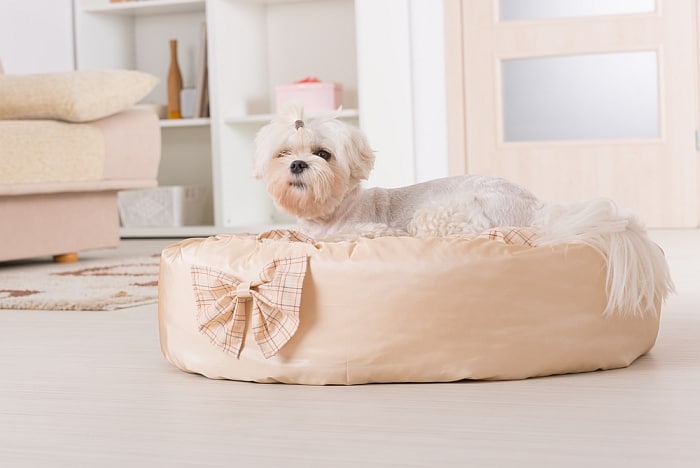
But you’ll need to consider a variety of factors when trying to pick the best bed for your dog. Some of the things you’ll want to consider are listed below.
The best beds for dogs with hip dysplasia:
Accommodate Your Dog’s Entire Body
Though it may make for funny photos, you don’t want your dog laying halfway off her bed – you want her whole body supported. There’s no hard-and-fast rule for selecting the proper size dog bed; you’ll usually need to measure the space she takes up while laying normally.
Provide Plenty of Cushion
In addition to having a large enough footprint to accommodate your dog, you’ll also want a bed that is thick enough to keep her entire body up off the floor. There’s nothing wrong with providing more cushion than necessary, but you’ll generally want to provide a bed with at least 4 inches of foam for most dogs. However, big dogs may need mattresses that are 6, 7, or 8 inches thick.
Feature a Memory Foam Core
Memory foam is a NASA-designed material, which was originally used in the construction of the space shuttle. Designed to deform when heated and then return to its original shape when the heat is removed, a memory-foam mattress will actually conform to your dog’s body and help cradle her perfectly.
Note that some manufacturers use proprietary versions of memory foam or similar materials. In most cases, these perform comparably to memory foam and offer similar benefits.
Have Removable, Machine-Washable Covers
A machine-washable cover won’t help your dog’s hips feel any better, but it will help you keep the bed cleaner and smelling fresher. This will also prevent you from having to throw away the bed if your dog comes down with ringworm, mites or some other resilient parasite.
Are Backed by a Manufacturer’s Warranty
High-quality dog beds will generally keep their loft for many years without starting to compress very much, but low-quality beds may squish down to half their original size in a matter of months.
Accordingly, it makes sense to buy from high-end manufacturers, who typically offer extended warranties. This will give you a better chance of obtaining a good bed for your dog, and it will give you some peace of mind while handing over your credit card.
Note that some manufacturers slap the “orthopedic” moniker on their mattresses, regardless of the fact that they don’t offer any tangible orthopedic benefits. So, don’t place too much weight on the labels and marketing copy plastered all over the packaging.
Are you the owner of a dog who suffers from hip dysplasia? We’d love to hear about the beds you have used for your pup. Did they help her feel better or regain any mobility? What did you like about them, and what do wish were different?
Let us know all about your experiences in the comments below.
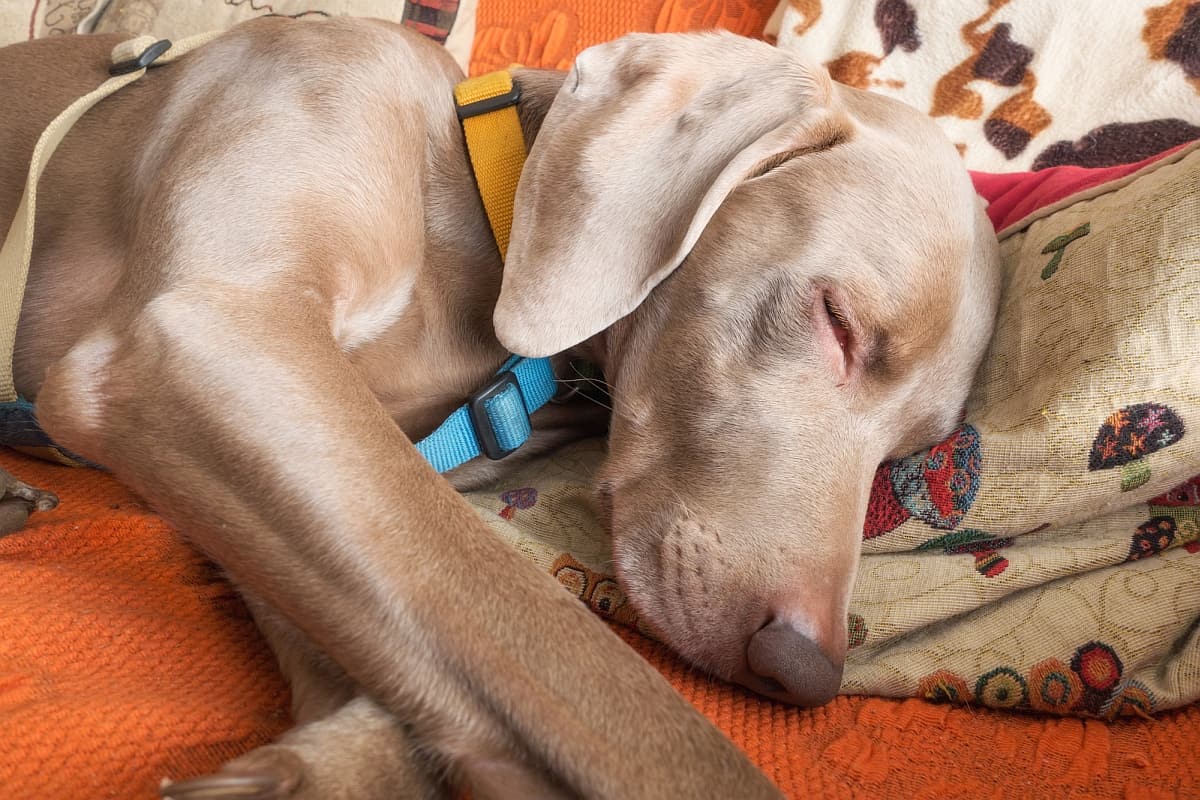







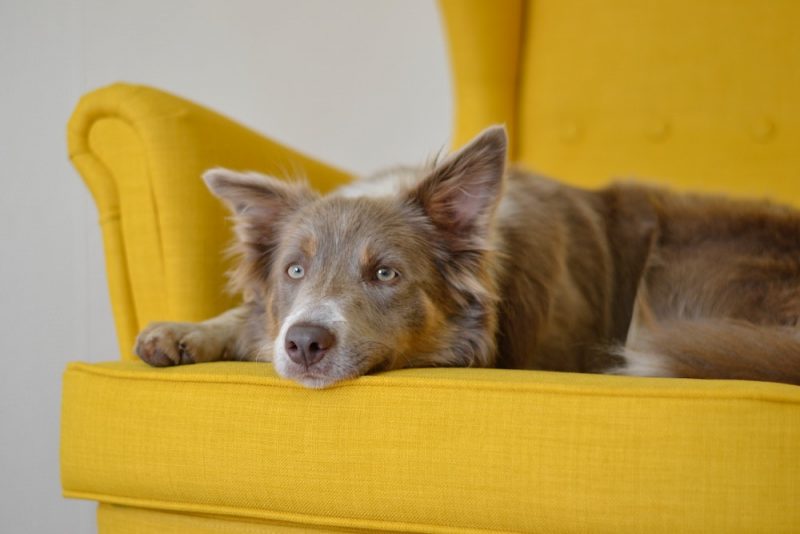
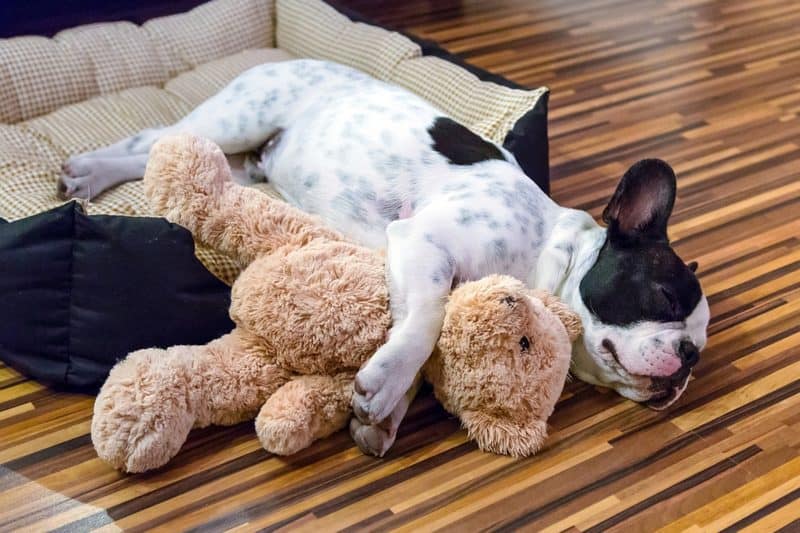
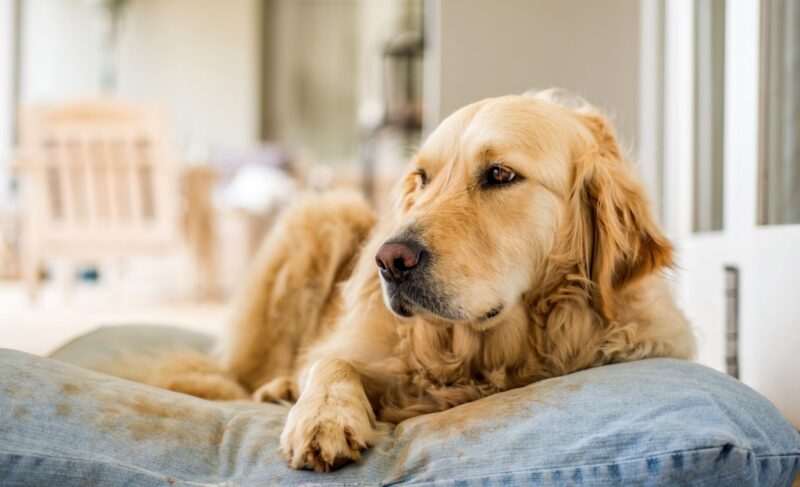

Leave a Comment